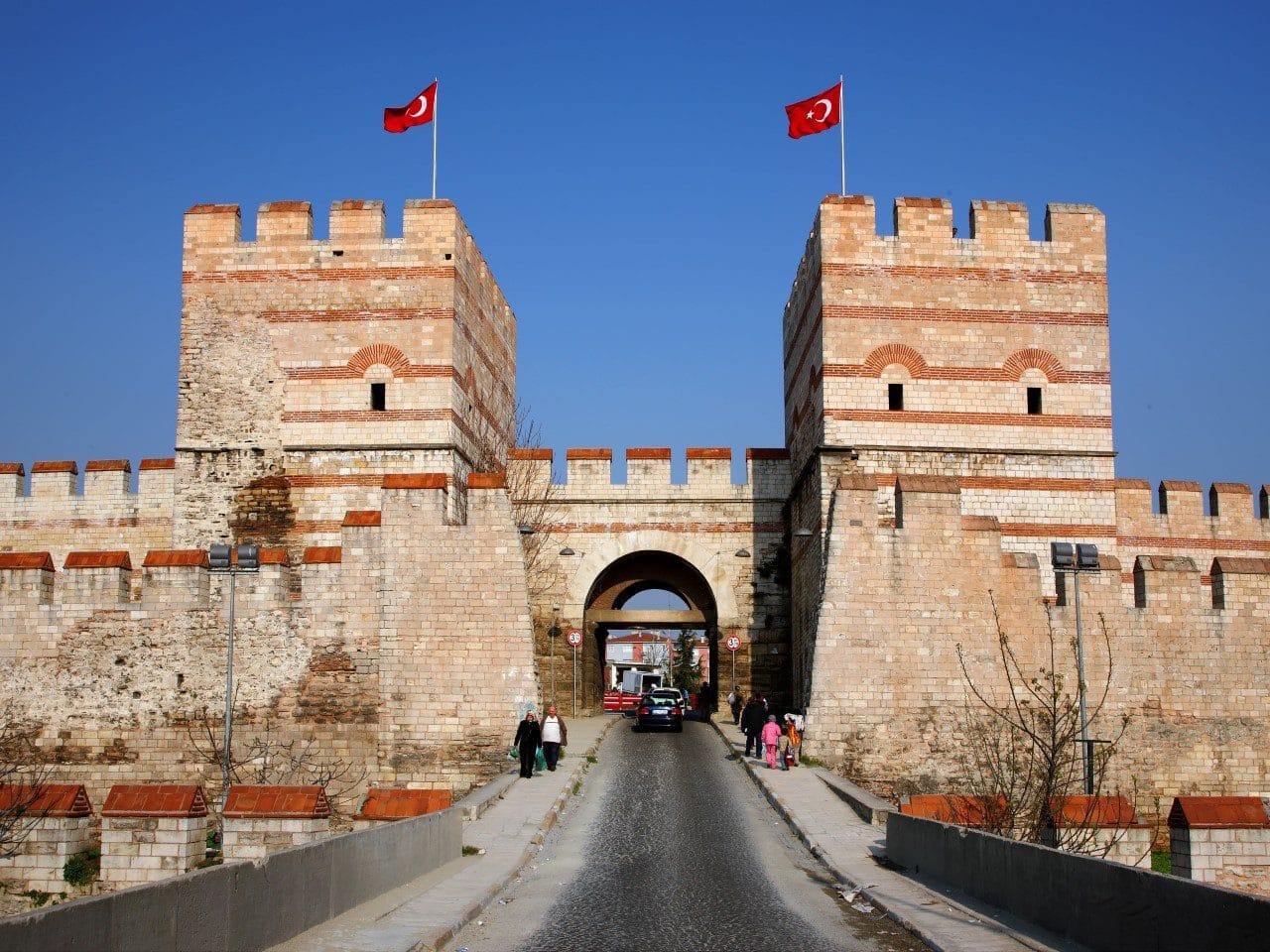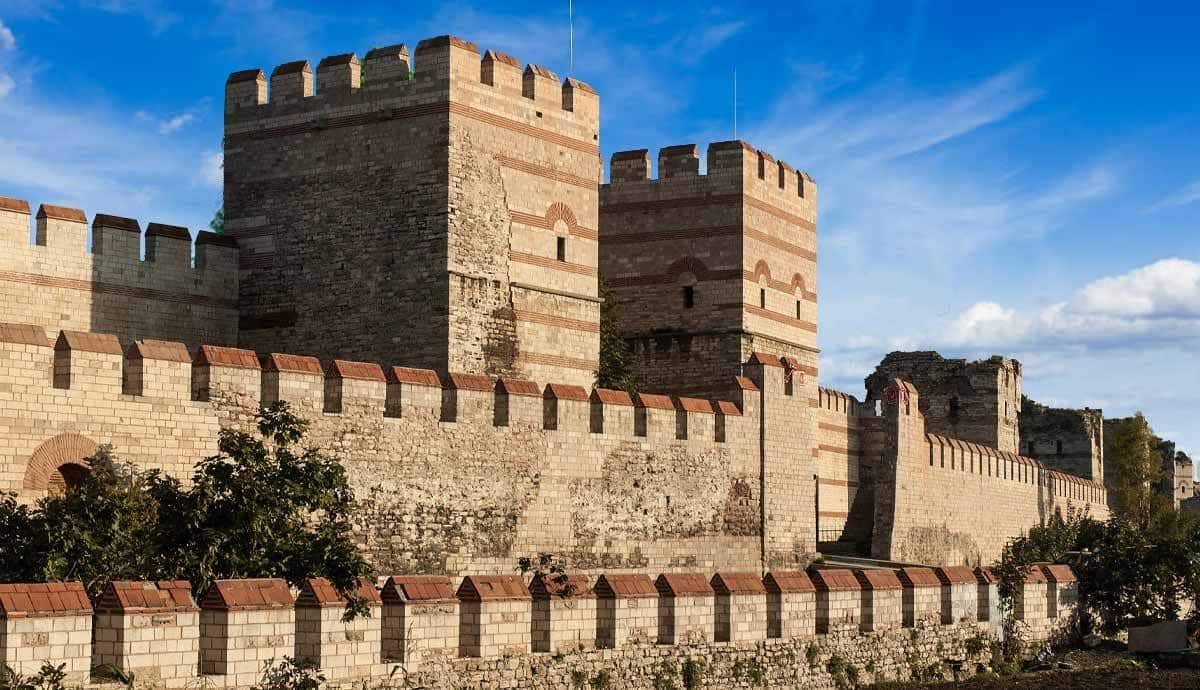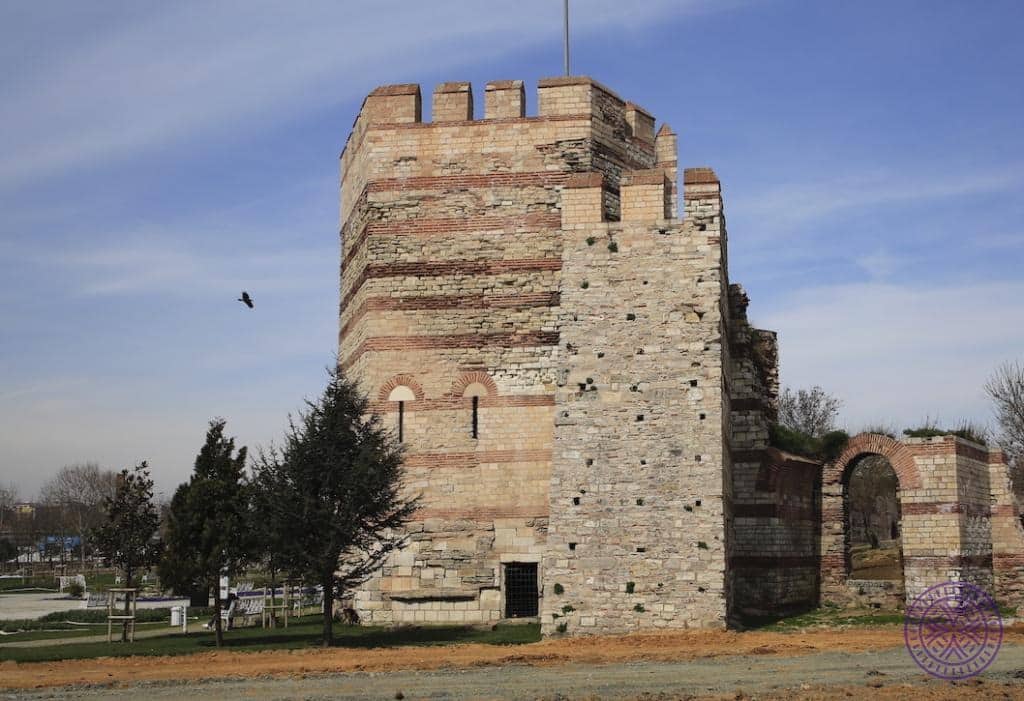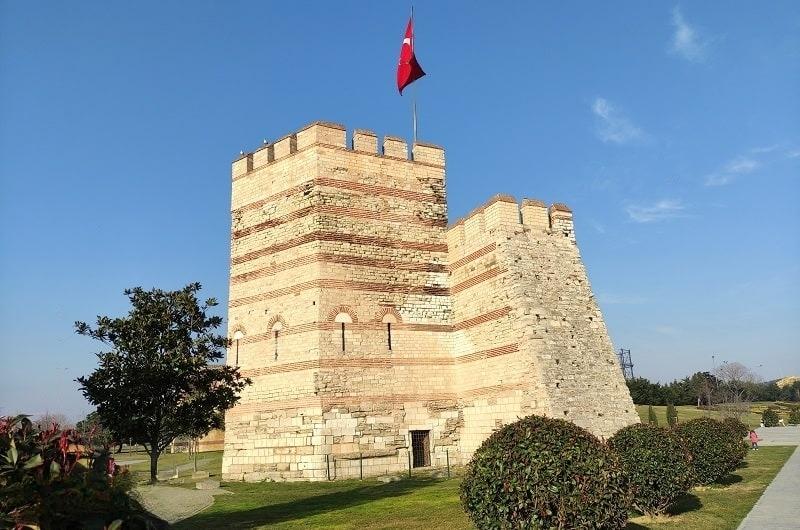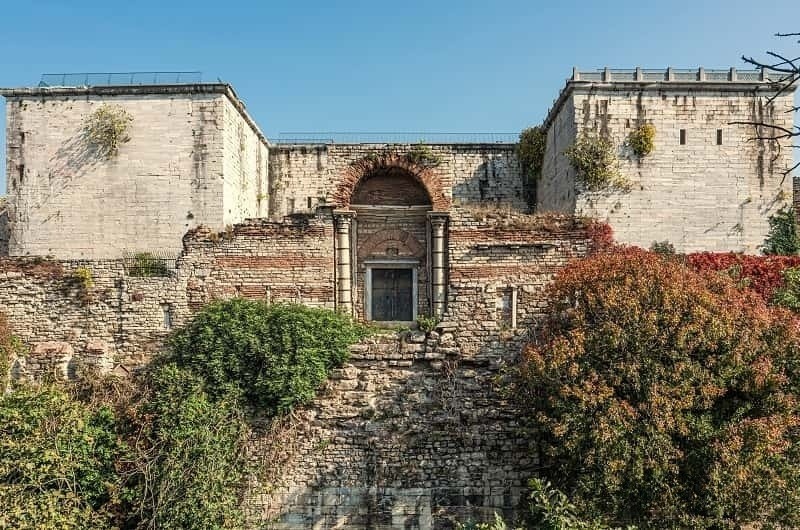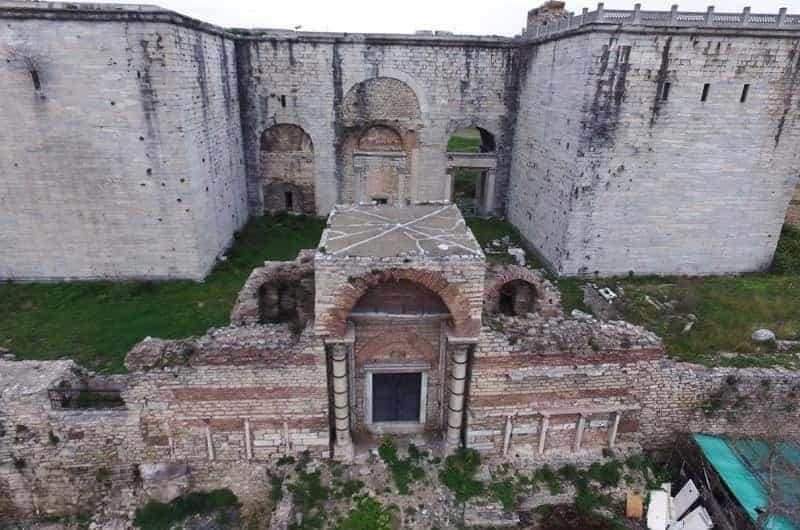The Walls of Constantinople, also known as the Walls of Istanbul, are a series of ancient defensive stone walls that have protected the city from countless sieges and invasions throughout history.
These walls were originally constructed by Constantine the Great.
They have been expanded and reinforced throughout history, making them one of the most impressive fortification systems of the ancient world.
Historical Background
Constantine the Great founded the city of Constantinople, modern-day Istanbul, as the new capital of the Roman Empire.
To protect this important city, he built a set of walls that surrounded it on all sides.
These walls not only shielded the city from land attacks but also provided defense against naval threats.
As the city grew, more walls were added. The most famous of these are the Theodosian Walls, built in the 5th century during the reign of Emperor Theodosius II.
This double line of walls was crucial in defending Constantinople from numerous sieges over the centuries, including those by the Avars, Arabs, Rus’, and Bulgars.
Structure and Design
The Walls of Constantinople are an architectural marvel due to their complexity and strength. They include:
- The Theodosian Walls: These are the most famous and complex part of the fortifications. They consist of a double line of walls with a moat in front, making them extremely difficult to breach.
- The Sea Walls: Protecting the city from naval attacks, these walls were less elaborate than the land walls but still provided significant defense.
One notable structure within the walls is the Marble Tower.
Marble Tower
Marble Tower (Mermer Kule), also known as the “Tower of Basil and Constantine,” was the last fortification before reaching the point where the sea walls met the land walls.
Initially, its foundations were in the sea, but over time, as the coastline shifted, it became land-bound.
Built with materials repurposed from earlier structures, the Marble Tower showcases a mix of Roman, Byzantine, and later Ottoman construction styles.
Inscriptions and Restorations
Throughout their long history, the walls have seen numerous repairs and reconstructions.
Various inscriptions embedded in the walls and towers tell the story of these efforts.
Tower 1
Tower number 1 is part of the inner and larger walls of the Theodosian Walls, which include ninety-six towers in total.
This tower has undergone noticeable modern restorations.
Near the top of the tower, there is a Greek inscription from the 11th century CE. It reads, “Tower of Basil and Constantine, faithful Emperors in Christ, pious Kings of the Romans,” referring to the famous emperors Basil II and Constantine.
Tower 2
Tower number 2 is located about fifty meters north of Tower 1 and is in a less preserved condition today.
Tower 3
Tower number 3 is about sixty meters northeast of Tower 2.
Tower 4
Tower number 4 is about sixty meters northeast of Tower 3.
It has an inscription from either Romanus II or Romanus III, dating back to the 10th or 11th century CE.
The inscription says the tower was built from scratch, which makes sense because its size and shape are different from the nearby towers.
Gates of the Walls
The walls featured several important gates, each with its own history and purpose. Two of the most notable gates are:
First Military Gate
Situated at the base of Tower 1, this gate was used exclusively by troops to enter and exit the city. A christogram, a symbol of Christ, adorns the inner facade of the arch, adding a religious significance to its military function.
Golden Gate
This was the main ceremonial entrance to the city, originally built by Emperor Theodosius I as a triumphal arch. Later expanded by Theodosius II, the Golden Gate was used for imperial processions and symbolized the glory and strength of the Byzantine Empire.
Restoration
After the Ottoman conquest of Constantinople in 1453, the walls continued to be maintained for some time.
However, by the 19th century, as the city expanded beyond its medieval boundaries, sections of the walls were dismantled.
Despite this, many parts of the walls have survived to this day.
Since the 1980s, a large-scale restoration program has been underway to preserve and restore these historic structures.
The ongoing efforts aim to maintain the walls, not only as a testament to the city’s rich history but also as a reminder of the engineering ingenuity of ancient times.


